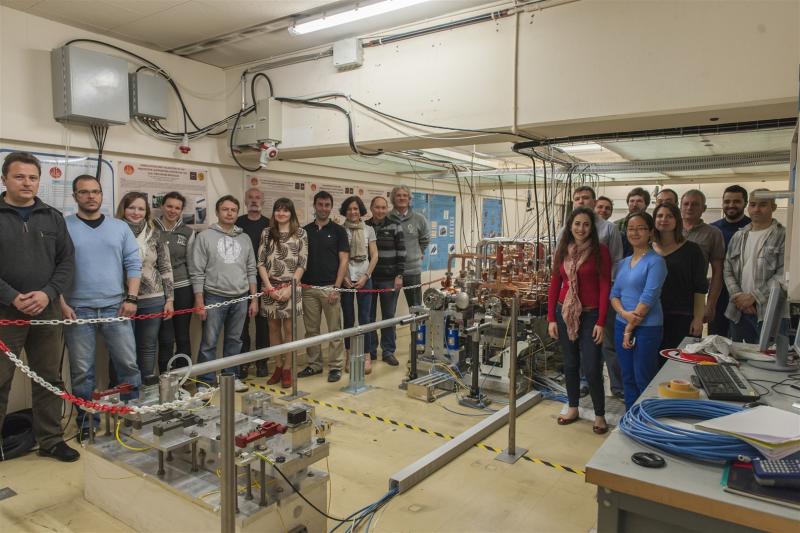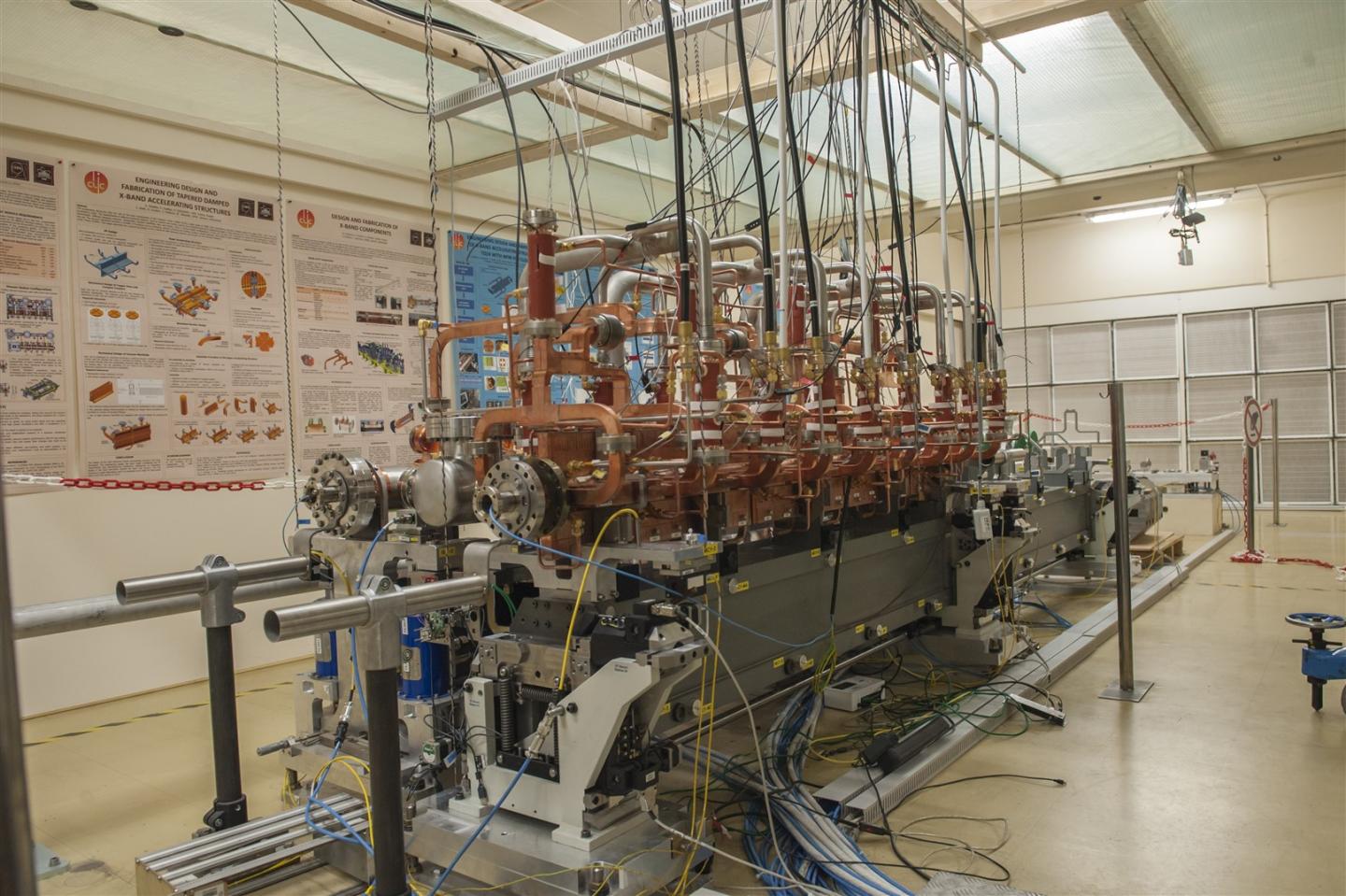It may look like a steampunk locomotive, but this first prototype module for the Compact Linear Collider (CLIC) won't be carrying any passengers. CLIC is a concept for a two-beam linear accelerator to collide electrons and positrons (antielectrons) head-on at energies up to several teraelectronvolts (TeV).
In the CLIC machine, energy is extracted from a low-energy, high-intensity electron beam to drive a parallel beam of particles. The main linear accelerators (linacs) have a modular design based on 2-metre long two-beam modules, and will operate under ultra-high vacuum conditions required for beam physics.
The module above – the first of its kind – is being tested at CERN, with neither beam nor radiofrequency (RF) system. The CLIC two-beam module team is checking the feasibility of the engineering designs for the different technical systems, such as the RF structures, the support structures, the alignment, stabilization and vacuum.
For example, two different configurations of the vacuum system are being tested. The first option (in use on the module pictured) has a central reservoir equipped with vacuum pumps. Dedicated side ports link the accelerating structures and Power Extraction and Transfer Structures (PETS) to the reservoir. In a second configuration, each accelerating structure and PETS has its own vacuum pump, so a central reservoir is not needed.
 The CLIC two-beam module team (Image:Anna Pantelia/CERN)
The CLIC two-beam module team (Image:Anna Pantelia/CERN)
To prepare the linac for its first beam, prior to beam operation, modules such as that above will have to be aligned to 10 millionths of a metre within a sliding window of 200 metres. During operation a dedicated repositioning system will align the beam according to the beam physics requirements.
In the CLIC machine, each module will be assembled on the surface and then lowered to the underground accelerator tunnel. So CLIC engineers are busy testing a transport system to get the modules where they will be needed. A second generation of modules is being prepared for tests with beam.
Read more: "CLIC two-beam module for the CLIC conceptual design and related experimental program" [PDF]

